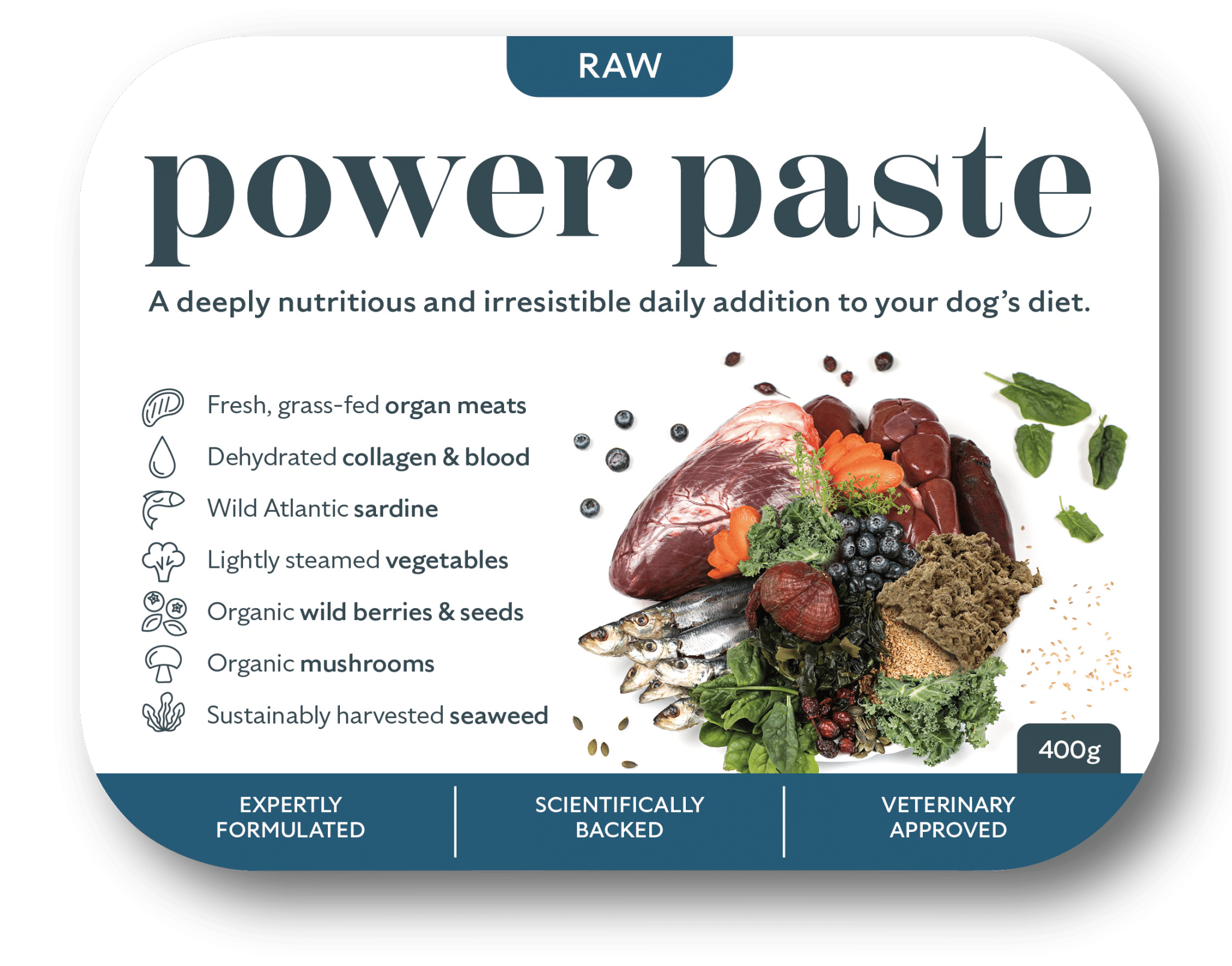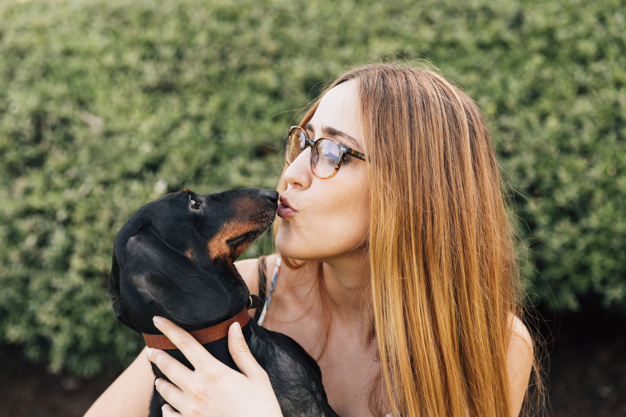Dog Bites Continued: With Input from Paraic O Sullieabhain
I had a great response to my article on the Irish Governments “Dangerous Dogs” signs / approach last week.
Sadly not every point was spot on. The main man with all the experience in this field is Páraic Ó Súilleabháin. He contacted me with some corrections and added some absolutely brilliant, illuminating information on the whole subject.
I particularly like the sheer number of major authorities AGAINST what the Irish Government are doing at the end of the article. Not that they ever let common sense get in the way of how they do things.
Find his comments below. For more go to Pairics FB page.
In the Words of Paraic O’ Súilleabháin…
First off, amazing job going through much of the literature. If everyone did that when coming up with public policy we wouldn’t have too many issues! Just a few points about some of the studies you listed
Regarding studies reporting some breeds being at a higher risk of hospitalisation, aside from the issue of breed identification, please see The National Canine Research Council for what is actually happening here.
Invariably the breeds that are biting are the highest in those populations. So the decade with the highest biters change based on popularity. Some try to control from population size by looking at license data for breeds but it is known that knowing a pure sample of dogs in a locality is nearly impossible, and people are biased to report certain breeds as they are primed to do so.
One study you mentioned in particular is “Mortality, Mauling and Maiming by Vicious Dogs” is a study that should never have gotten through peer review. This article deals adequately with its issues.
The Sacks paper from the Journal of American Medical Association you referenced was used so much by countries as the basis to justify BSL that the authors had to release an official statement telling everyone that you cannot infer that you are more likely to be killed by pit bull or rottweilers compared to other breeds. Sadly it was taken literally, but that is not what they were actually saying. Again, it just came back to the point you made that it is about popularity of the breeds in a given area.
The “Top 10 Biters in the US” reports you mentioned I would not spend two seconds taking that with any seriousness. These ‘stats’ are used by a lot of tabloid news/radio in Ireland. In reality it is from a man that is friends with the people that run (Dogs Bite.Org). The stuff from this site is not published and is based on media reporting of dog bite deaths. Others have reviewed that ‘data’ they provide and it’s crossly inaccurate.
As you rightly mentioned, the vast majority of dog bite victims are children under the age of 10 years. One think I heard quite a bit the last few days that I don’t like is when the comparison is made (and has been over the last few days) that these breeds are restricted as they are more likely to inflict more damage than a terrier. As you rightly pointed out, most victims of fatalities are children and have been killed numerous times by toy and small terrier breeds. That is why this particular argument I find quite damaging, as it does nothing for those children.
On your points about pit bulls and restricted breeds being able to inflict greater injury due to extremely strong bites and different biting patterns; there is actually no real evidence to suggest this so far. Here is a short review of the point.
I’m not suggesting what you said is incorrect; it’s brilliant what you have compiled. These are just some points that might be of use to you and your followers. I have put some links for articles below all of you might be interested in.
If people want to follow me on facebook from this page I will be posting the findings once published etc.”
http://www.ncbi.nlm.nih.gov/pubmed/24299544
http://www.sciencedirect.com/science/article/pii/S155878780700264X
http://www.ncbi.nlm.nih.gov/pubmed/19879172
http://www.sciencedirect.com/science/article/pii/S1558787806000128
http://www.lincoln.ac.uk/news/2013/12/813.asp
http://www.journalvetbehavior.com/article/S1558-7878%2807%2900236-5/abstract
http://www.sciencedirect.com/science/article/pii/S1090023308000476
http://www.dogbehavior.it/index.php?journal=dogbehavior&page=article&op=view&path%5B0%5D=16
http://www.journalvetbehavior.com/article/S1558-7878%2811%2900008-6/abstract
Breed neutral legislation working (we should do something very similar): http://www.tandfonline.com/doi/abs/10.2752/089279391787057099?journalCode=rfan20
DOG GROUPD NOT IN SUPPORT OF THE IRISH GOVERNMENTS “DANGEROUS BREEDS” APPROACH
The American Bar Association (ABA)
“…the American Bar Association urges agencies to adopt comprehensive breed-neutral dangerous dog/reckless owner laws that ensure due process protections for owners, encourage responsible pet ownership and focus on the behavior of both dog owners and dogs, and to repeal any breed discriminatory or breed specific provisions.”
American Kennel Club (AKC)
“The American Kennel Club supports reasonable, enforceable, non-discriminatory laws to govern the ownership of dogs. The AKC believes that dog owners should be responsible for their dogs. We support laws that: establish a fair process by which specific dogs are identified as “dangerous” based on stated, measurable actions; impose appropriate penalties on irresponsible owners; and establish a well-defined method for dealing with dogs proven to be dangerous. We believe that, if necessary, dogs proven to be “dangerous” may need to be humanely destroyed. The AKC strongly opposes any legislation that determines a dog to be “dangerous” based on specific breeds or phenotypic classes of dogs.”
American Society for the Prevention of Cruelty of Animals (ASPCA)
“The American Society for the Prevention of Cruelty to Animals supports reasonable “leash” laws and laws that regulate dogs who have caused unjustifiable injury or who present substantial danger to the public. However, the ASPCA opposes laws that ban specific breeds of dogs or that discriminate against particular breeds. These laws unfairly discriminate against responsible dog guardians based solely on their choice of breed. Such laws also fail to achieve the desired goal of stopping illegal activities such as dog fighting, and breeding and/or training dogs to be aggressive. The ASPCA believes that strict enforcement of laws that ban animal fighting, and breeding and/or training animals to fight, is the proper means to address the problem.”
American Veterinary Medical Association (AVMA)
“The American Veterinary Medical Association supports dangerous animal legislation by state, county, or municipal governments provided that legislation does not refer to specific breeds or classes of animals. This legislation should be directed at fostering safety and protection of the general public from animals classified as dangerous.”
American Veterinary Medical Association PRIT (AVMA PLIT)
“The AVMA does not support the adoption of breed specific bans by insurers and does support education programs to teach the public proper safety precautions when dealing with strange or dangerous dogs.”
Animal Farm Foundation (AFF)
“There has never been any evidence that breed bans or restrictions contribute to improved public safety. Regulating breeds puts the focus on the dog, without addressing owner behavior and owner responsibility to the animal and the community.”
Association of Pet Dog Trainers (APDT)
“The Association of Pet dog Trainers APDT supports the adoption or enforcement of a program for the control of potentially dangerous or vicious dogs that is fair, non-discriminatory and addresses dogs that are shown to be dangerous by their actions. The APDT opposes any law that deems a dog as dangerous or vicious based on appearance, breed or phenotype. Canine temperaments are widely varied, and behavior cannot be predicted by physical features such as head shape, coat length, muscle to bone ratio, etc. The only predictor of behavior is behavior. As an organization comprised of dog trainers, behaviorists and other animal professionals, the APDT is fully aware that any dog can bite, any dog can maim, and any dog can kill. A dangerous or vicious dog is a product of a combination of individual genetics, upbringing, socialization, and lack of proper training. The solution to preventing dog bites is education of owners, breeders, and the general public about aggression prevention, not legislation directed at certain breeds. Singling out and publicly demonizing certain breeds as dangerous is unfair, discriminatory, and does an immense disservice to those breeds and the people who care about them. Even more chilling, breed specific legislation encourages the faulty public perception of other breeds as being inherently safe. This can lead misguided individuals to engage in unsafe conduct with other breeds that can result in injury or death by individual representatives of those breeds mistakenly perceived as safe. Also, designating certain breeds as inherently dangerous implies to the public that behavior is not effectively influenced, positively or negatively, by training. This misconception will likely produce a growing number of dangerous dogs as misinformed, complacent dog owners fail to practice responsible aggression-prevention measures.”
Australian National Kennel Council (ANKC)
“The ANKC supports reasonable, enforceable, non-discriminatory laws to govern the ownership of dogs. The ANKC believes that dog owners should be responsible for their dogs. We support laws that establish a fair process by which specific dogs are identified as ‘dangerous’, based on stated measurable actions; impose appropriate penalties on irresponsible owners; and establish a well-defined method for dealing with dogs proven to be dangerous. We believe that, if necessary, dogs proven to be ‘dangerous’ may need to be humanely destroyed. The ANKC strongly opposes any legislation that determines a dog to be ‘dangerous’ based on specific breeds or phonetic classes of dogs.”
Australian Veterinary Association (AVA)
“The Australian Veterinary Association (AVA) does not support breed-specific legislation for dog bite prevention, because experience in other countries has shown that such legislation has failed to reduce the frequency of dog bites.”
Best Friends Animal Society (BFAS)
“Best Friends opposes breed-discriminatory legislation (also called breed-specific legislation, BSL), which arbitrarily targets particular breeds. Breed-discriminatory laws are not only ineffective at improving community safety, they are extremely expensive to enforce and deplete needed resources from animal control.”
British Veterinary Association (BVA)
“The BVA has long been opposed to any proposal or legislation that singles out particular breeds of dogs rather than targeting individual aggressive dogs. The problems caused by dangerous dogs will never be solved until dog owners appreciate that they are responsible for the actions of their animals”
Centers for Disease Control & Prevention (CDC)
“A CDC study on fatal dog bites lists the breeds involved in fatal attacks over 20 years (Breeds of dogs involved in fatal human attacks in the United States between 1979 and 1998). It does not identify specific breeds that are most likely to bite or kill, and thus is not appropriate for policy-making decisions related to the topic. Each year, 4.7 million Americans are bitten by dogs. These bites result in approximately 16 fatalities; about 0.0002 percent of the total number of people bitten. These relatively few fatalities offer the only available information about breeds involved in dog bites. There is currently no accurate way to identify the number of dogs of a particular breed, and consequently no measure to determine which breeds are more likely to bite or kill. Many practical alternatives to breed-specific policies exist and hold promise for preventing dog bites.”
Continental Kennel Club
“Continental Kennel Club does not support legislation that bans the ownership of specific breeds of dogs. CKC believes that it is the owner’s responsibility to control his or her dog and that the owner is responsible for the actions of his or her dog. The right of people to own and enjoy the breed of dog of their choice should not be taken away. Owners of all breeds of dog should take the responsibility to train their dogs and maintain control of their dogs at all times both at home and away from the home. Proper obedience training and advanced obedience training in some cases is necessary for the owner to maintain control of his or her dog at all times.”
Humane Society of the United States (HSUS)
“The HSUS opposes legislation aimed at eradicating or strictly regulating dogs based solely on their breed for a number of reasons. Breed Specific Legislation (BSL) is a common first approach that many communities take. Thankfully, once research is conducted most community leaders correctly realize that BSL won’t solve the problems they face with dangerous dogs. If the goal is to offer communities better protection from dogs who are dangerous, then thoughtful legislation that addresses responsible dog keeping is in order. Legislation aimed at punishing the owner of the dog rather than punishing the dog is far more effective in reducing the number of dog bites and attacks. Well enforced, non-breed-specific laws offer an effective and fair solution to the problem of dangerous dogs in all communities. Comprehensive “dog bite” legislation, coupled with better consumer education and forced responsible pet keeping efforts, would do far more to protect communities than banning a specific breed.”
Maryland Veterinary Medical Association
“The Maryland Veterinary Medical Association encourages and supports ordinances that promote responsible pet ownership and at the same time protects the public from dangerous and vicious animals. We oppose legislation that restricts or prohibits certain breeds of dogs, since we do not believe this is a workable solution.”
National Animal Control Association (NACA)
“Dangerous and/or vicious animals should be labeled as such as a result of their actions or behavior and not because of their breed. Any animal may exhibit aggressive behavior regard-less of breed. Accurately identifying a specific animal’s lineage for prosecution purposes may be extremely difficult. Additionally, breed specific legislation may create an undue burden to owners who otherwise have demonstrated proper pet management and responsibility. Agencies should encourage enactment and stringent enforcement of dangerous/vicious dog laws. When applicable, agencies should not hesitate to prosecute owners for murder, manslaughter, or similar violations resulting from their animal’s actions, and their owner lack of responsibility. Laws should clearly define “dangerous” “Dangerous and/or vicious animals should be labeled as such as a result of their actions or behavior and not because of their breed. Any animal may exhibit aggressive behavior regard-less of breed. Accurately identifying a specific animal’s lineage for prosecution purposes may be extremely difficult. Additionally, breed specific legislation may create an undue burden to owners who otherwise have demonstrated proper pet management and responsibility. Agencies should encourage enactment and stringent enforcement of dangerous/vicious dog laws. When applicable, agencies should not hesitate to prosecute owners for murder, manslaughter, or similar violations resulting from their animal’s actions, and their owner lack of responsibility. Laws should clearly define “dangerous” or “vicious”, and provide for established penalties. Penalties may include fines, imprisonment, and/or the relinquishing of total privileges to pet ownership. If a dangerous/vicious animal is allowed to be kept, laws should specify methods of secure confinement and control. A dangerous/vicious animal when kept outside should be confined in an escape-proof enclosure which is locked and secured on all six sides. Signs should be posted at property entrances and be visible from the nearest sidewalk or street. The licensing record could include a notation which will immediately identify an animal which has been deemed dangerous or vicious.”
National Animal Interest Alliance (NAIA)
“NAIA supports reasonable laws to protect the public from dangerous dogs and opposes breed-specific legislation in any form.”
National Canine Research Council (NCRC)
“There is no scientifically valid evidence and no reasonable argument to support breed-specific legislation. Instead of discriminating against breeds, take responsibility for dog ownership and management practices.”
New Zealand Kennel Club (NZKC)
“The NZ Kennel Club does not support Breed Specific Legislation but rather places the emphasis on Responsible Dog Ownership and Education.”
Royal Society for the Prevention of Cruelty to Animals – Australia (RSPCA)
“The RSPCA does not support breed specific legislation, also known as BSL. Our view, based on the available international scientific evidence, is that any dog may be dangerous and that dogs should not be declared as dangerous’ on the basis of breed. While we recognise that there is a strong genetic component in a dog’s propensity for aggressive behaviour, their trigger point for aggression and capacity to inflict serious injury, these factors are not isolated to any specific breed. The RSPCA does not believe that BSL is in any way effective in preventing or reducing dog attacks or in protecting the public from dangerous dogs.”
Royal Society for the Prevention of Cruelty to Animals – United Kingdom (RSPCA)
“The focus should be on the other end of the lead – i.e. the owner. This means that any dog can be dangerous in the wrong hands – e.g. mistreated or badly trained – regardless of its breed or type. For these reasons, the RSPCA is opposed to BSL and would like to see it abolished.”
Swedish Kennel Club (SKK)
“The Swedish Kennel club’s policy is the same as the Swedish government’s policy, and that is that no breeds shall be banned, but dogs with overly aggressive temperaments and extreme “fightdrive” must be banned. The government has just put forward a new legislation regarding dangerous dogs which gives the police and authorities a greater possibility to take dogs that has a record of biting and that has a extreme temperament. This is something that the SKK has approved of. The SKK is of the opinion that dangerous dog are not a breed problem but an owners problem and no specific breed or type of dog shall be banned.”
The Federation of Veterinarians of Europe (FVE)
“Although some countries have adopted breed-specific measures, there is no scientific or statistic evidence to suggest that these effectively reduce the frequency or severity of injuries to people. To date, no scientific criteria have been identified by which it can be determined that a dog is dangerous by simply describing its racial or other physical parameters. Breed-specific legislation engenders a false and dangerous perception that breeds not included will not show aggression. Aggression is a normal behaviour and can be shown by any dog of any breed, type or mixed breeding. Breed-specific legislation does not discriminate between individual members of a breed, many of which may not be predisposed to aggressive behaviour. Rather, all dogs of a specific breed, whatever their behaviour, are subject to the same restrictions. FVE strongly believes that the most effective means of preventing and controlling aggression is to direct measures at the individual dog and its owner.”
The National Association of Dog Obedience Instructors (NADOI)
“The National Association of Dog Obedience Instructors (NADOI) strongly opposes breed specific legislation which targets or discriminates against certain dogs based only on their breed or appearance. Such laws are unfair because they assume that a dog may be dangerous simply because of breed. In fact, it is almost always the behavior of the owners of these dogs which makes them a danger to others.”
United Kennel Club (UKC)
“United Kennel Club believes that breed specific legislation is a poor choice for communities interested in protecting citizens from dog bites and attacks. Breed specific legislation, or BSL, is the singling out of a breed or breeds of dogs to take varying degrees of enforcement action against, in a weak attempt to reduce the numbers of dog attacks. The majority of BSL is directed at American Pit Bull Terriers, proudly our number two breed, but other breeds such as Rottweilers and Akitas are targeted as well. Realistically, the number of dog bites nationwide has been fairly consistent over the last century, and there has not been any meaningful increase. Attempting to attribute bites to a single breed and labeling that breed is fruitless, as there exists no real, factual data to show that any one breed is more responsible for bites and attacks than others. Singling out a breed to attach blame does not work to decrease dog attacks. Case in point, the Dutch government has lifted a 15-year ban on ‘pit bulls’ because there has not been ANY decrease in dog bites. There are many other factors at play behind dog attacks, such as the purpose the dog is used for, owner management and maintenance, neglect or cruelty factors, and other variables such as sex, age, socialization, etc., that are not breed related. Not only is BSL ineffective, it also increases costs to cities and communities to enforce these laws and defend the laws against challenges in court. Some cities have overturned long standing bans due to a dramatic increase in enforcement costs and an influx to animal control; the economic impact was far too great. BSL is also extremely difficult to enforce. Many laws and ordinances either do not correctly identify what breeds are included, or are overly vague. Often these laws include mixes of the listed breeds as well. There currently exists no legally accepted scientific method to positively identify breeds or mixes, and many breeds look very similar, especially to the general public. While even professionals have difficulty in identifying what a mix may be comprised of, inexperienced law enforcement officials with no dog background are expected to identify mixtures, and end up with arbitrary and often incorrect identifications. BSL results in punishing and ultimately driving away responsible owners of the targeted breed(s) while having little to no impact on the actual cause of problems, those using dogs for illegal or immoral purposes. Instead of enacting BSL, communities should be more aggressive in enforcement of dangerous dog, anti-fighting, and anti-cruelty statutes. More emphasis must be placed on owner responsibility, as the majority of attacks are due to owner neglect or mistreatment. Targeting the actions and non-action of owners will be more effective and sensible in realistically decreasing dog attacks.”
United States Department of Justice (DOJ)
“The Department [of Justice] does not believe that it is either appropriate or consistent with the Americans with Disabilities Act (ADA) to defer to local laws that prohibit certain breeds of dogs based on local concerns that these breeds may have a history of unprovoked aggression or attacks. Such deference would have the effect of limiting the rights of persons with disabilities under the ADA who use certain service animals based on where they live rather than on whether the use of a particular animal poses a direct threat to the health and safety of others […]. State and local government entities have the ability to determine, on a case- by-case basis, whether a particular service animal can be excluded based on that particular animal ́s actual behavior or history– not based on fears or generalizations about how an animal or breed might behave. This ability to exclude an animal whose behavior or history evidences a direct threat is sufficient to protect health and safety.”
The White House Administration
“We don’t support breed-specific legislation – research shows that bans on certain types of dogs are largely ineffective and often a waste of public resources.”












